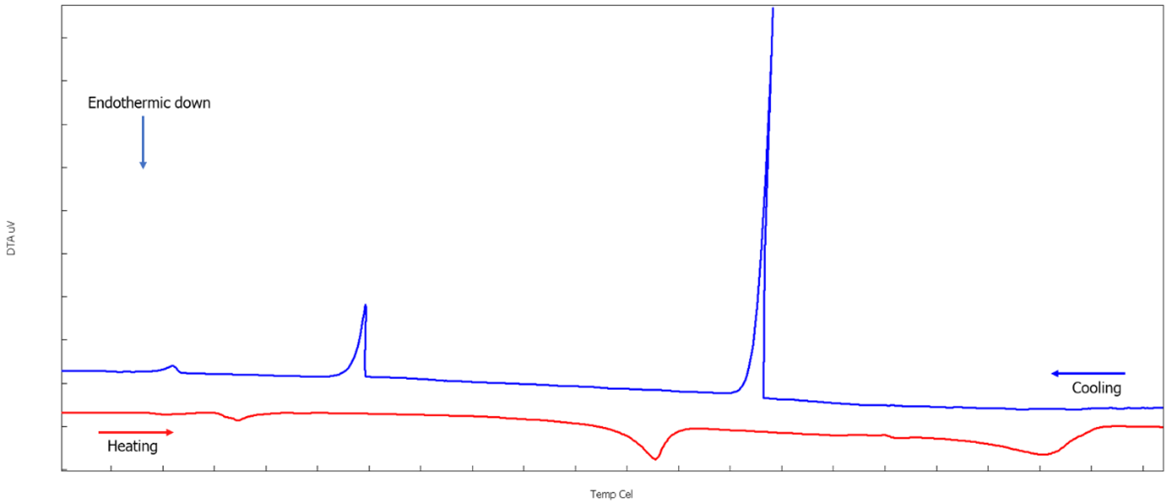Lancaster University hosts one of the United Kingdom’s most robust university-affiliated nuclear centers, which boasts internationally recognized capabilities. Joshua Findley, a postgraduate researcher, is currently in the process of researching thermodynamic measurements of materials destined for the next generation of nuclear reactors.

Image Credit: shutterstock.com/TonyV3112
He inherited a Hitachi STA7200 that the university bought back in 2015, which had only been used a handful of times since it was first purchased. Thus, to get the instrument back in spec to collect novel data to help him publish papers and complete his PhD, he contacted Hitachi’s customer support team for help.
A Multi-Functional Thermal Analyzer
Lancaster University is home to an STA7200, an integrated thermodynamic analyzer that seamlessly blends thermogravimetric analysis (TGA) and differential thermal analysis (DTA) into a single apparatus for simultaneous measurement.
This instrument, procured in 2015, was only really used for thermogravimetric testing (TG) before Joshua arrived in 2021. The DTA capabilities of the device had not been previously explored.
Joshua felt confident in its ability to deliver highly precise and accurate measurements, thanks to the STA7200’s remarkable sensitivity and performance, as reported by his colleagues.
“Whilst I didn’t choose the instrument myself, I was told the TG application on the STA7200 is second to none.”
Developing the Next Generation of Nuclear Power Plants
Joshua’s research focused on the fusion of various molten salts, and he intended to use the STA7200 to understand more about their behaviors during melting, both liquidus and solidus and solid-solid phase diagrams. The objective of his study is to evaluate how molten salts can function as a primary coolant for the next generation of nuclear power plants.
Molten salts offer benefits such as their low vapor pressure and high boiling point, allowing reactors to operate at elevated temperatures and reduced pressure, thereby enhancing efficiency and safety. A comprehensive grasp of the melting and cooling characteristics of these salts is crucial to assess their effectiveness.
The STA7200 utilized by Joshua enables precise determination of the temperatures at which his molten salts undergo melting and crystallization, as well as the accurate measurement of heat capacity for various molten salts. Figure 1 displays DTA outcomes for a molten salt subjected to controlled heating and cooling.
Joshua points out, “The impressive baseline stability of the STA7200 makes my life easier when it comes to data processing.”

Image Credit: Hitachi High-Tech Analytical Science
Being There When it Matters
A service engineer was promptly dispatched to the site when the equipment failed due to years of inactivity and required repair. Within an hour, the engineer identified the issue.
The instrument was then sent to one of Hitachi’s repair centers for fixing in the workshop and returned to Lancaster University’s research lab within a few weeks. The service team ensured the instrument’s calibration was suitable for Joshua’s work, guaranteeing highly precise and accurate measurements.
Joshua added, “When problems arise, which they always do, what impressed me the most was that Hitachi’s team was available and very responsive. This was fantastic as the whole process has completely exceeded our expectations, as we thought it would take months. Hitachi also arranged a courier, which made everything run much smoother. This was by far the best experience the university has had with an external company with a similar situation.”
The service team ensured the swift processing and ordering of any necessary parts or accessories, providing Joshua with regular updates, including lead times and the quickest suppliers.
Joshua continued, “Not only has the response time and helpfulness of the Hitachi team impressed me, but Hitachi’s TA experts have also provided insightful advice which has aided the decision choices and steered my project in the right direction. This has saved me both valuable time and money from my total allowable budget. They didn’t have to do this, to go out of their way to provide me with additional information and tips.”
NEXTA STA Thermal Analyzer – Visibly Better Thermal Analysis
For over half a century, Hitachi’s thermal analyzers have been relied upon for trustworthy analysis in research and development and quality control.
The latest STA analyzers incorporate DSC, DTA, and TGA technologies, making them a popular choice for research groups and institutions aiming for a thorough understanding of their materials. These analyzers allow heat capacity measurements up to 1500 °C using the standard three-curve method or modulated DSC.
The latest STA analyzer, the NEXTA STA, builds on the success of its predecessors and enables the detection of subtle weight changes across a wide temperature range, ensuring that the material meets the necessary performance and quality standards.
Keeping You Running
Hitachi’s extensive network of service hubs worldwide provides comprehensive technical support to keep operations running smoothly. Services such as repairs, recertification, and maintenance are offered, along with training, to maximize the utility of the instrument.
The specialized team is always on hand to help. Additionally, consumables and accessories are provided to ensure genuine parts are available.

This information has been sourced, reviewed and adapted from materials provided by Hitachi High-Tech Analytical Science.
For more information on this source, please visit Hitachi High-Tech Analytical Science.